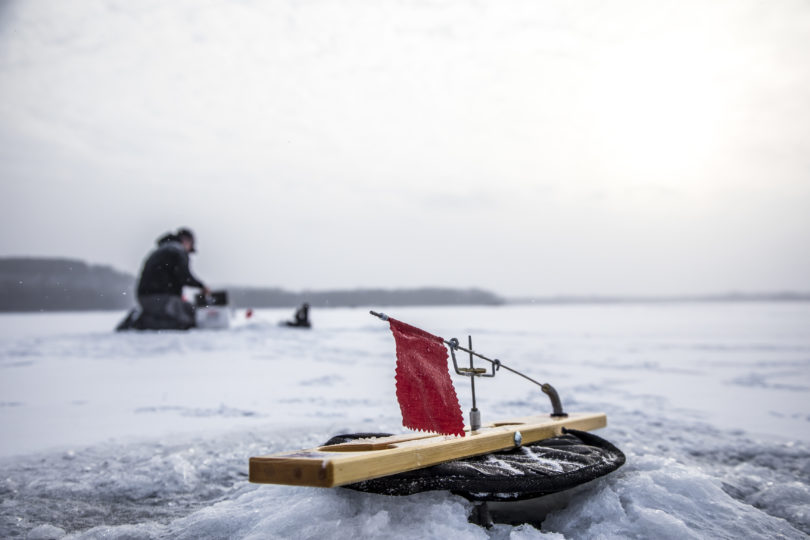HOW TO FIND CONSISTENT MID-SEASON ICE FISHING SUCCESS

In many areas across ice fishing country, the ice fishing action got off to a bit of a late start this time around. Warmer than usual weather prevented safe ice from forming, and then when it did form, more warm weather sent things backwards. Now though, the action is underway. Lots of anglers are on the ice and success has been anywhere from good to exceptionally good. For that particularly good action to continue, there are some things that we can do. Following are some of those things.
I usually like the later rounds of the ice season better than the first few. We can get around on the ice better, and that’s a big deal. This time of year, it’s not unusual to drill dozens of holes in the ice in our attempts to find fish. The ice is thicker and there’s more snow on it, so the fish aren’t as easily spooked. And, although additional traffic on the ice can spook fish this time of year, the extra traffic won’t be as noticeable as it was earlier in the season.
The weather is usually warmer as mid-winter turns into late- winter, and that makes us more likely to get out and move around. I like to put my equipment in a flip-over and cover the ice, drilling holes as I move. Even with all my gear, it’s possible to be comfortable yet efficient. It’s not unusual to be covering territory and realize that you’re farther from your starting point than you might have imagined. When that happens, fish the holes that have been drilled on your way back to your starting point. You can often catch a bunch of fish by re-visiting holes that you’ve already fished.
Sonar is such an important part of successful ice-fishing. This time of year, it usually doesn’t pay to sit on a hole for more than 5 minutes if there are no fish below. The FLX-28 that sees the most use from me does all I need it to do to help me see and catch more fish. If I don’t see fish, I don’t hang around. But if I do see something that looks interesting but doesn’t want to eat what I’m showing them, I show them something different.
The biggest challenge to catching fish through the ice at this time of year is fishing pressure and conditioning. The fish have seen a lot of baits so they’re more selective. Additionally, many fish have been caught and taken home, so there’s fewer of them down there. Now is the time to abandon community spots and go out searching for other locations that aren’t as popular or well-known. There might not be as many fish on these spots, but the fish that are there often won’t be as finicky. Find different fish and show them different presentations and you’re chances for success will improve.
Downsizing and going to a slower presentation can be a good idea later in the season, especially when the fish are more choosy than usual. Some of the most successful ice anglers are using what is referred to as a 1-2 punch. They attract the fish with a bait that gets the fishes attention, something like a Tikka Mino. This style of bait has a good amount of action. The fish come in and look and will often eat it. But sometimes they just look. When this happens, drop a smaller jig to them. A Drop Jig tipped with live bait or plastic works well especially for panfish. Impart little action to the jig. Once you get the fish’s attention with the larger more aggressive bait, they have a tough time saying “No” to the smaller bait with less action.
The weather is warming or will be soon. The days will get longer, and the fish will get hungrier. If you get out on the ice in the next few weeks, the odds that you’ll catch a few are good, and that should be enough of a reason to go ice-fishing while the ice is still safe.
– By Bob Jensen of fishingthemidwest.com.








